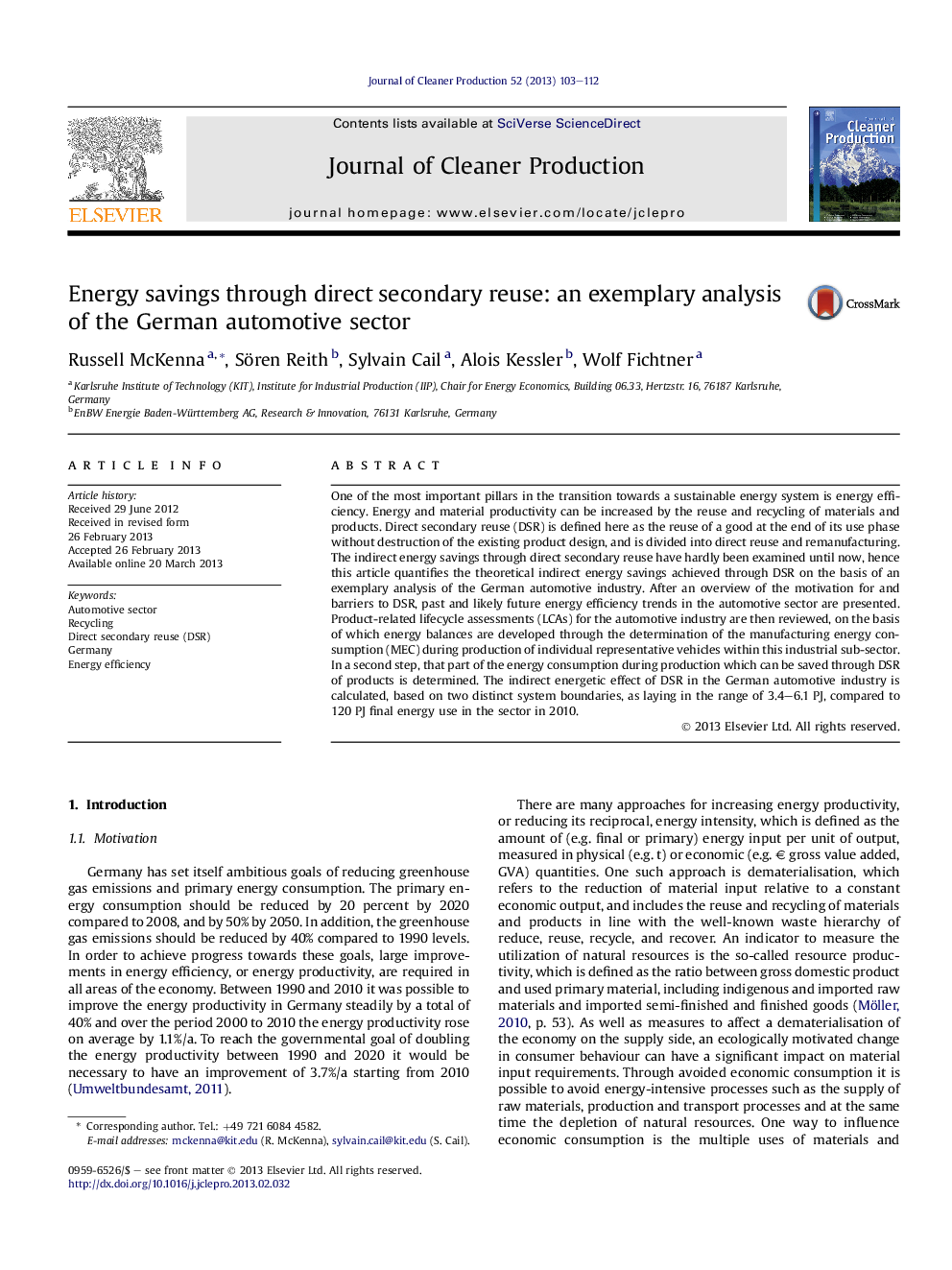| Article ID | Journal | Published Year | Pages | File Type |
|---|---|---|---|---|
| 1745229 | Journal of Cleaner Production | 2013 | 10 Pages |
One of the most important pillars in the transition towards a sustainable energy system is energy efficiency. Energy and material productivity can be increased by the reuse and recycling of materials and products. Direct secondary reuse (DSR) is defined here as the reuse of a good at the end of its use phase without destruction of the existing product design, and is divided into direct reuse and remanufacturing. The indirect energy savings through direct secondary reuse have hardly been examined until now, hence this article quantifies the theoretical indirect energy savings achieved through DSR on the basis of an exemplary analysis of the German automotive industry. After an overview of the motivation for and barriers to DSR, past and likely future energy efficiency trends in the automotive sector are presented. Product-related lifecycle assessments (LCAs) for the automotive industry are then reviewed, on the basis of which energy balances are developed through the determination of the manufacturing energy consumption (MEC) during production of individual representative vehicles within this industrial sub-sector. In a second step, that part of the energy consumption during production which can be saved through DSR of products is determined. The indirect energetic effect of DSR in the German automotive industry is calculated, based on two distinct system boundaries, as laying in the range of 3.4–6.1 PJ, compared to 120 PJ final energy use in the sector in 2010.
